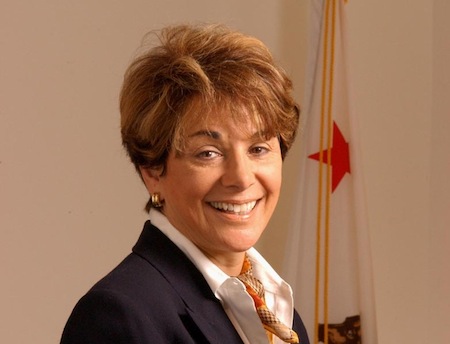Now Hear This: Rep. Eshoo Presses FCC on Calm Act Enforcement
Rep. Eshoo asks FCC to investigate commercial loudness

Rep. Anna Eshoo (D-Calif.) wants some answers from the FCC about enforcement of her CALM Act legislation that regulates the volume of TV commercials.
In a letter to acting FCC Chairwoman Jessica Rosenworcel Eshoo was looking for satisfaction she suggested she did not get from the former Republican FCC: "On July 21, 2020, I wrote to then-Chairman [Ajit] Pai, requesting information about complaints related to and enforcement of the CALM Act," she wrote. "His response of Aug. 11, 2020, indicated that the FCC has never brought an enforcement action under the law, even though the FCC receives thousands of complaints. His response also indicated that CALM Act complaints were increasing in the first half of 2020. A press report using more recent data shows that complaints increased sharply from April 2020 through February 2021, with the article concluding that '2021 is poised to be the worst year since the initial rollout” of the CALM Act. This worries me a great deal.'"
She said that is why she wants the FCC to investigate the apparent rise in loudness of TV ads and "take enforcement action as appropriate."
Also Read: Calm Act Creator Eyes Streaming
The 2010 bill, whose full name is the Commercial Advertisement Loudness Mitigation Act, regulates the volume of broadcast, cable and satellite commercials in relation to the programming around them. The idea was to prevent the volume of commercials from being significantly higher than the surrounding programming.
Essentially the bill incorporates ATSC standards for preventing "large changes in audio loudness from program to interstitials and from channel to channel."
In implementing the law, the FCC made cable operators responsible for the volume of both national and local ads, as well as promos, while TV stations are responsible for the national network and syndicated ads, as well as promos and local ads, both on broadcast and on the signals they deliver to cable operators. That means if a cable operator delivers a TV station ad that violates the act, it is the broadcaster who is responsible.
The smarter way to stay on top of broadcasting and cable industry. Sign up below
In 2014, the FCC updated its enforcement with a new measurement algorithm apparently to close an electronic loophole in which an advertiser could use silence to offset excessive loudness in calculating the average volume of a commercial. The change excluded "very quiet or silent" parts of an ad when measuring its average loudness.
Contributing editor John Eggerton has been an editor and/or writer on media regulation, legislation and policy for over four decades, including covering the FCC, FTC, Congress, the major media trade associations, and the federal courts. In addition to Multichannel News and Broadcasting + Cable, his work has appeared in Radio World, TV Technology, TV Fax, This Week in Consumer Electronics, Variety and the Encyclopedia Britannica.

